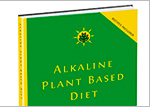Vitamin D From The Sun: Darker Skin Needs More Sun Exposure To Make The Optimal Level
Vitamin D From The Sun: Darker Skin Needs More Sun Exposure To Make The Optimal Level

Natural Life Energy
People are often told to get 15 minutes of sun exposure a day to get their optimal level of vitamin D from the sun.
This recommendation simplifies the issue and can do a disservice to the many people who need more sun exposure to make their optimal level of vitamin D from the sun.
The optimal level of vitamin D from the sun would be 10000 IU units daily. When the skin is exposed to the maximum UVB exposure the body will make up to 10000 IUs of vitamin D from the sun.
After maximum UVB exposure the vitamin D precursors in the skin reach a tipping point and any additional vitamin D from the sun is not used.
This upper limit is what informs the vitamin D sun-exposure recommendations. The goal is to reach 10000 IUs of vitamin D from the sun daily to fully support healthy living.
UVB Radiation And Vitamin D From The Sun
The body converts cholesterol in the body to vitamin D. The body provides this vitamin from sunlight. This process happens in the skin when it is exposed to sunlight. More specifically, the process happens when the skin is exposed to the UVB radiation of sunlight.
The sun provides both UVA and UVB radiation. Early and late in the day the sun only provides only UVA which is not involved in the production of vitamin D in the skin.
The sun provides UVB radiation from about 2 hours before noon to about 2 hours after noon. Being out in the sun when the sun is not providing UVB radiation will not help with vitamin D production in the skin.
Skin Type, UV Index, And Sun Exposure
Darker skin offers more protection against UV radiation than lighter skin. Darker skinned people traditional inhabited warmer climates and spent more time in the sun.
Melanin in darker skinned people allowed them to stay in the sun longer without harmful effects. The extra protection managed UV absorption by the skin and caused vitamin D production to occur over a longer period of time.
Lighter skinned people traditionally inhabited colder climates with a lower UVI, and wore more clothing so their skin was less exposed to the sun. With lesser amounts of melanin in the skin, lighter skinned people bodies developed to make optimal levels of vitamin D from the sun more quickly.
Along with skin type the UV Index (UVI) also plays a part in how much sun exposure is needed to produce optimal vitamin D levels in the body. What is UV Index?
Importance Of Vitamin D
Vitamin D was primarily regarded as an important nutrient for bone health due to its ability to regulate calcium and phosphate in the bloodstream.
Research supports that vitamin D insufficiency is linked to a higher risk of developing Alzheimer’s disease, autoimmune diseases, cancer, and chronic pain. More about vitamin D benefits
It is important to get the right amount of UVB radiation from sun exposure to make the proper amount of vitamin D from the sun.
Chart Identifying Skin Types And Time Needed To Get Vitamin D From The Sun
| SKIN TYPE | UVI 0-2 | UVI 3-5 | UVI 6-7 | UVI 8-10 Tanning | UVI 11+ |
| Lightest – Never Tan | None | 10-15 minutes | 5-10 minutes | 2-8 minutes | 1-5 minutes |
| Rarely Tan | None | 15-20 minutes | 10-15 minutes | 5-8 minutes | 2-8 minutes |
| Slowly Tan | None | 20-30 minutes | 15-20 minutes | 10-15 minutes | 5-10 minutes |
| Rapidly Tan | None | 30-40 minutes | 20-30 minutes | 15-20 minutes | 10-15 minutes |
| Darkest – Always Dark | None | 40-60 minutes | 30-40 minutes | 20-30 minutes | 15-20 minutes |
Sources:
“The Role of Supplements with Dr. Matt Lederman” course material from the Certificate in Plant Based Nutrition from the T. Colin Campbell Center for Nutrition Studies and eCornell






